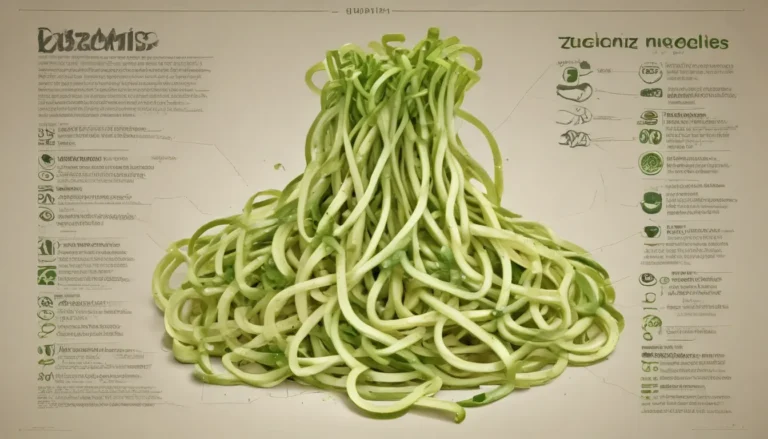The pictures in our articles might not always show exactly what the text is talking about. We use these images to make the article more interesting and eye-catching. They are there to add to the text, but not to replace it or show every detail.
Are you a fan of pasta, bread, or desserts? If so, you've likely encountered semolina, a versatile ingredient with a rich history and culinary importance. Derived from durum wheat, semolina offers a distinct nutty flavor and coarse texture that enhances various dishes. In this article, we will delve into 20 fascinating facts about semolina, shedding light on its origins, nutritional benefits, and diverse uses in different cuisines. Get ready to enhance your understanding and appreciation for this remarkable ingredient.
The Origins of Semolina
Semolina, a coarse flour, has been a staple in Mediterranean and Middle Eastern cuisines for centuries.
Semolina: A Versatile Ingredient
Commonly used in pasta, bread, and pastries, semolina showcases its culinary versatility.
A Nutritional Powerhouse
Rich in protein, fiber, iron, and magnesium, semolina offers essential nutrients for a balanced diet.
The Color of Semolina
The yellow hue of semolina is derived from the pigments present in durum wheat.
Used in Traditional Italian Pasta
Semolina takes center stage in traditional Italian pasta varieties like spaghetti and macaroni.
The Granular Texture of Semolina
Thanks to its coarse texture, semolina adds a unique granular touch to baked goods.
A Common Ingredient in Greek Cuisine
Greek desserts such as halva and semolina cake often feature semolina as a key ingredient.
Low Glycemic Index
With a low glycemic index, semolina promotes steady energy release and blood sugar control.
Used in Indian Cuisine
In India, semolina, known as "suji," is a versatile ingredient in dishes like upma and halwa.
Popular in North African Cuisine
North African cuisines frequently incorporate semolina in dishes like couscous and semolina bread.
The Versatility of Semolina
From porridge to thickening agents and coatings for fried foods, semolina shines in various culinary roles.
Healthy for Heart Health
Semolina's high fiber content can support heart health and a healthy cardiovascular system.
Used as a Binding Agent
A common choice as a binding agent, semolina adds texture and structure to meatballs and veggie burgers.
A Wholesome Breakfast Option
Starting your day with semolina porridge offers a nutritious and filling breakfast choice.
Used in Traditional Moroccan Cuisine
Moroccan dishes like "msemmen" and "seffa" feature semolina as a key ingredient.
Used in Mediterranean Sweets
Delicious Mediterranean sweets like basbousa benefit from the unique texture of semolina.
Beneficial for Digestive Health
The fiber content in semolina aids in maintaining digestive health and preventing constipation.
Used in Italian Polenta
Italian polenta, a traditional cornmeal dish, often includes semolina for added texture.
Rich in Antioxidants
Semolina boasts antioxidants that combat free radicals and protect against oxidative stress.
Used in Middle Eastern Sweets
Middle Eastern delights such as baklava and kunafa highlight semolina's versatility in desserts.
In conclusion, semolina stands out as a versatile, nutritious ingredient with a rich history and numerous health benefits. From heart-healthy properties to its role in diverse cuisines, semolina offers something for everyone. Whether you're exploring traditional dishes or experimenting with new recipes, incorporating semolina into your culinary adventures can elevate your meals in exciting ways. Take the time to explore the world of semolina and unlock its potential in your kitchen.
FAQs About Semolina
-
What is semolina?
Semolina is a coarse flour made from durum wheat, known for its nutty flavor and versatile culinary applications. -
How is semolina used in cooking?
Semolina is a key ingredient in pasta, couscous, porridge, desserts, and even as a coating for fried foods. -
Is semolina gluten-free?
No, semolina contains gluten as it is derived from durum wheat, making it unsuitable for individuals with gluten sensitivity or celiac disease. -
What are the health benefits of semolina?
Semolina offers protein, fiber, iron, and magnesium, contributing to improved digestion, heart health, and sustained energy levels. -
Can semolina aid in weight loss?
While semolina is calorie-dense, its protein and fiber content can support feelings of fullness and assist in weight management when consumed in moderation. -
How long does semolina last?
Properly stored, semolina can last up to one year when stored in an airtight container in a cool, dry place away from direct sunlight. -
Can semolina be substituted in recipes?
Depending on the recipe, semolina can sometimes be substituted with other flours, but the texture and taste may vary, so it's best to use semolina when specified.
Our dedication to providing accurate and engaging content ensures that each fact we share is a valuable addition to your knowledge. Join us on this journey of exploration and discovery as we uncover the fascinating world of food, one ingredient at a time. Trust in our commitment to quality and authenticity as we continue to share insights and information that enrich your culinary experiences.






